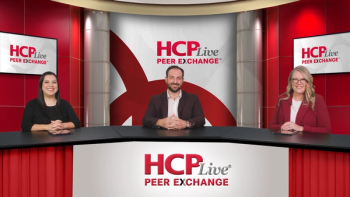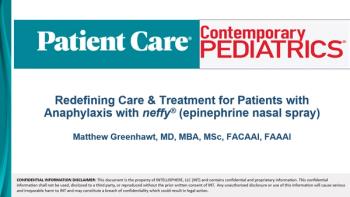
In this interview from the 2025 Child Neurology Society meeting, Olivia Kim-McManus explains how far the gene therapy and genetic testing space has come related to pediatric neurology.

In this interview from the 2025 Child Neurology Society meeting, Olivia Kim-McManus explains how far the gene therapy and genetic testing space has come related to pediatric neurology.

Valeria C. Cohran, MD, emphasized the importance of close collaboration between intestinal rehab programs and general pediatricians to optimize care for children with intestinal failure.

Older age, longer remaining intestine, and presence of an ileocecal valve were linked with a greater likelihood of achieving sustained enteral autonomy in children with short bowel syndrome-associated intestinal failure.

Panelists discuss how clinical results confirm the effectiveness, safety, and caregiver convenience of new nonsteroidal therapies for pediatric AD.

Panelists discuss how improved clinical trial design helps ensure new treatments reflect real-world experiences and family priorities.

In this Contemporary Pediatrics video interview, Dale Lee, MD, highlights how pediatricians can be involved in celiac disease follow-up care.

Julie Khlevner, MD, AGAF, highlights that FDA approval of linaclotide provides the first pharmacologic therapy for pediatric IBS-C.

The American Academy of Pediatrics updates guidelines, allowing doxycycline use in young children for tick-borne infections, enhancing treatment options.

A multicenter study from NASPGHAN 2025 highlights geographic and immune-driven variations in pediatric H. pylori infection across the Americas.

Ruth Lynfield, MD, discusses an approach clinicians can take in counseling parents who may have concerns about vaccines.

One sentence description: Panelists discuss how unmet needs in topical care highlight the importance of safe, simple, and effective long-term therapies for children with AD.

Panelists discuss how individualized strategies combining steroids, nonsteroidal agents, and caregiver education promote sustained disease control in children.

“There was no effect of lenacapavir on either estrogen containing or testosterone-containing regimens, no decrement in estradiol or testosterone levels," said Jill Blumenthal, MD, MAS.

Anne Kasmar, MD, MSc, highlighted how AMR innovation relies on immune-based science, novel modalities, and strong regulatory collaboration at IDWeek 2025.

Panelists discuss how nonsteroidal PDE-4 and JAK inhibitors offer effective, targeted relief while addressing caregiver concerns about safety and chronic use.

Panelists discuss how calcineurin inhibitors can be safely and effectively used in children with proper education and clinical oversight.






Panelists discuss how corticosteroids remain essential for controlling flares but must be used thoughtfully with education and reassurance for families.

Panelists discuss how individualized, consistent topical care helps build trust, promotes adherence, and prevents disease flare-ups in children with AD.

At CNS 2025, Kathryn Xixis, MD, highlighted the growing adoption of EPAs and outcomes-based learning in pediatric neurology.

In our second interview with Peace Madueme, MD, he explains the types of conditions that frequently appear on ECGs, which are aiding routine sports physicals in youth athletes in Florida.

Panelists discuss how treatment goals should center on the child’s comfort, sleep quality, and emotional well-being, not just visible skin improvement.

Panelists discuss how atopic dermatitis affects not only the child’s comfort and confidence but also family well-being and emotional health.

At the 2025 CNS Annual Meeting, Craig Press, MD, PhD, discussed challenges in achieving equitable access to diagnostics and expertise in pediatric neurocritical care.

Craig Press, MD, PhD, discussed the evolution of pediatric neurocritical care toward individualized care at the 2025 Child Neurology Society meeting.

Joseph Vithayathil, MD, discusses being awarded the Elterman Research Grant at the 2025 CNS Annual Meeting in Charlotte, North Carolina.